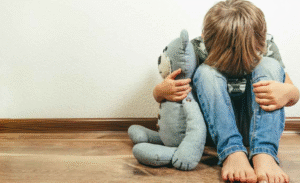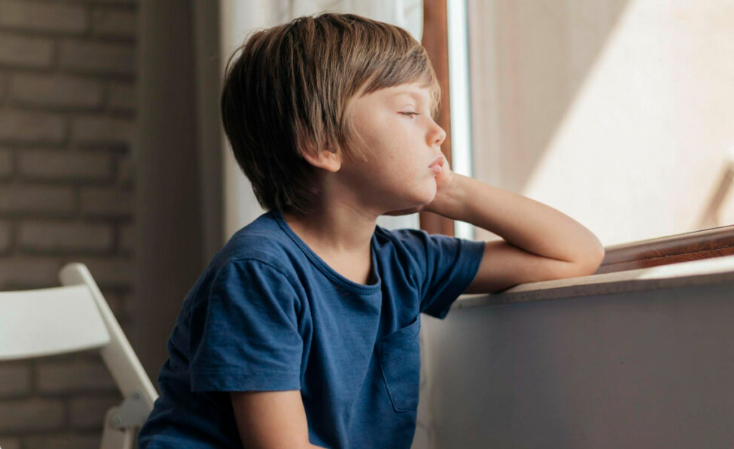How do you Help Kids Manage Big Emotions: Proven Strategies for Calm & Confidence
You can learn how to teach your children to deal with their big emotions by reading this blog about which tips of yours can help your children build their emotional balance and confidence in handling their emotions.
You must have noticed that your children sometimes start crying too much about small things and keep crying loudly, but they are not worried, this is common.
Through a study, we have come to know that sometimes it is difficult to control the emotions of children, that is why sometimes they cry too much over small things because they cannot control their emotions, such as feeling angry, sad, or frustrated.
But we can teach our children how to control their emotions—with love, patience, and a few smart strategies.
Understanding Big Emotions in Kids
1. What qualifies as “big emotions” in children
Big emotions mean emotions that can be overwhelming for children, such as anger within children, sadness, fear, or excitement about an assignment. All these feelings are so strong for children that controlling them and expressing them is difficult. Children get confused. They face problems in reacting to small things and get upset due to something.
2. Age-appropriate emotional responses
Emotional responses of children of all age groups are seen to be different. For example, toddlers throw more tantrums because they find it difficult to express themselves in words. Preschoolers get confused. Yes, older kids are frustrated with their feelings, have anxiety, and are under pressure. This means that different behavior is normal for each age.
3. The science behind emotional development in kids
The brain of children is developing at this time, due to which they have difficulty in managing to express and process their emotions and it takes time. The meaning of emotional development is that they are gradually understanding their emotions and whatever they are feeling, they are expressing it in the same way. At this time, the role of parents is very important.
4. Why emotional regulation is a key life skill
The meaning of emotional regulation is to understand, express, and process your emotions. Taking control. If kids learn these skills early, they become more confident, secure, and mentally strong. At every stage in life—school, friendship, career—this skill helps them handle stress and conflicts.
Recognizing Triggers and Warning Signs 
1. Typical emotional triggers for toddlers, preschoolers, and school-age children
Each group of children has different types of emotional triggers. Toddlers become upset when said “no” to everything or receive no attention. Preschoolers become angry when routines are broken or when they lose at a game. School-age children have more mature feelings like comparisons with friends, pressure from school, or problems with their friends.
It is crucial that parents learn to know whether their child is frustrated, angry, or sad — only then can we assist them appropriately.
2. How to identify early emotional overload cues
When a child becomes emotionally overpowered, subtle cues are evident at the outset. For example:
-Sudden mood swings
-Over-reacting about little things
-Being excessively clingy or withdrawn
-Displaying tension in body language, e.g., clenching fists or gritting teeth
By identifying early signs, we can control their feelings before they become out of control. Teaching children to recognize their feelings early on becomes a long-term emotional competence.
3. Distinguishing between tantrums and emotional meltdowns
Parents must know the difference between a meltdown and a tantrum.
A tantrum is largely an action wherein the kid responds to something, such as rolling on the floor or shouting for a toy. Once they make up their minds, they become fine right away.
A meltdown is caused by emotional overload. When the kid gets so overwhelmed that he cannot manage his emotions. In this case, he is unable to calm down until his nervous system calms down on its own.
A tantrum is some rationality, but a meltdown is all emotional — knowing this distinction allows us to more effectively help our child.
4. Developing emotional awareness in children and adults
Emotional awareness is the ability to recognize and label your own and others’ feelings. When we are emotionally aware ourselves, we can teach these skills to our children.
Parents need to notice their reactions — do we collapse into frustration, or do we react calmly? When we communicate our feelings openly and truthfully (e.g., “I’m feeling stressed a little”), kids learn that it’s safe and okay to speak about their feelings.
In this manner, emotional awareness becomes a family skill that builds everyone’s emotional well-being.
Validating Emotions Without Judgement
Validating the emotions of children means accepting them without thinking whether it is right or wrong. For example, whenever children get angry or frustrated, it becomes very important to listen to them. When we convince them or tell them the wrong things, children feel bad and they start suppressing their emotions. That is why it is very important to validate their emotions.
Why Validation Is More Powerful Than Fixing
The first instinct of parents is that if the child is crying or is angry, then they should correct it. However, finding solutions for children every time can hinder their emotional growth. When you just listen to children and accept their feelings, the child learns to process his own emotions. Meditation teaches him that his feelings are important and he can learn to understand things on his own.
Phrases That Validate Instead Of Dismissing

Here are some phrases you can say when you need to validate your child’s feelings:
-“I believe you are very sad, what occurred?”
-“I see you are really angry.”
-“This was tough.”
-“I can see how you feel that way.”
Don’t use these dismissing lines instead:
-“Shut up, for such a tiny thing?”
-“You always exaggerate.”
-“This isn’t a big deal.”
Teaching Children That All Feelings Are Acceptable
It is extremely essential to let children know that happiness, anger, fear, sadness – all feelings are natural. Children often think that crying or getting angry is wrong and hide their emotions. When you say that each feeling has its place, they can show their feelings without being guilty.
Helping Kids Name Their Feelings (“Name it to tame it”)
“Name it to tame it” is a psychological strategy that states that if a child can label his feelings, he can manage them more effectively. If a 5-year-old child is simply crying, you can tactfully ask him – “Are you angry? Or sad?” By doing so, he will be able to recognize his feelings and gradually learn to manage his behavior.
To do this you can also use emotion flashcards, storybooks, or charts of facial expressions.
Calming Techniques That Work
Breathing techniques and sensory aids
How to apply breathing techniques and sensory aids in children
When children are angry or feeling overwhelmed, their nervous system is triggered. Deep breathing techniques calm them down. For example:
-Breathing in for 4 seconds, holding for 4 seconds, and breathing out for 4 seconds – this is referred to as “box breathing.”
-Playful breathing activities such as “Smell the flower, blow the candle.”
Sensory objects such as stress balls, fidget spinners, or textured toys redirect their attention and soothe them. They are particularly beneficial for children who are sensory-sensitive or anxious.
Grounding techniques for anxious or overwhelmed children
How to ground children when they are anxious
Grounding strategies assist in grounding children in the “here and now” when their thoughts are overcome with emotions. Some efficient grounding methods are:
5-4-3-2-1 technique: Ask your child what they are seeing 5 things, what they are feeling 4 things, what they are hearing 3 sounds, what they are smelling 2 things, and what they are tasting 1 thing.
Focus their attention on a simple physical activity like drinking water, kissing soil, or taking a short walk.
These strategies help them feel in control.
-Using visuals and calm-down kits
-How do visuals and calm-down kits help
-Kids struggle to learn things verbally, so visual aids such as emotion charts, feeling faces, or picture cards assist them in comprehending and communicating their feelings.
Calm-down kits are pre-assembled boxes filled with their relaxing goodies such as:
-Coloring books
-Chew toys
-Stress balls
-Noise-cancelling headphones
-Lavender-scented pouch (if the child prefers this scent)
Whenever their mood is out of sorts or they experience an emotional meltdown, this kit assists with their emotional control.
Establishing a “safe space” at home or in the classroom
Make a “safe space” where the child can manage emotions peacefully
Each child requires a spot where they can express their emotions without criticism
You can make a calm corner or emotion tent at home or school where:
-There are soft pillows, their favorite blanket or stuffed animal
-Low light levels
-His calm-down kit is present
-A visual feeling chart so he can communicate how he is feeling
This environment should not be a zone of punishment, but instead a comfort zone the child can visit voluntarily when he is emotionally stimulated.
Teaching Emotional Vocabulary – How to introduce children to emotional words
In the emotional growth of children, it is extremely essential for them to be aware of the correct words. Only when children can name their emotions, they are able to understand and communicate them appropriately. Come, in this section, we will learn how to teach emotional vocabulary to children.
1. Age-appropriate word lists of emotions – Emotional words by age
Young children are not able to grasp all the emotions. So, you need to teach them certain simple emotional words based on their age:
Toddlers (1-3 years): happiness, anger, sadness, fear
Preschoolers (3-5 years): excitement, confusion, irritation, friendship
Primary age children (6+ years): jealousy, frustration, nervousness, gratitude
Using these simple words, you can make them identify and label their feelings.
2. Teaching emotions through books, games, and flashcards – Use stories, games, and flashcards to teach emotions
Kids learn through what they can see and play with. You can utilize the following tools:
Storybooks: Stories based on emotions such as “The Color Monster” or “Glad Monster, Sad Monster” make kids learn about emotions.
Games: Charades of emotions or matching games where the child identifies the emotion from the face.
Flashcards: Practice with cards of facial expressions such as happy, angry, and sad.
All these activities are enjoyable as well as informative.
3. Modeling emotional language as a parent or teacher – Model emotional language as a parent or teacher
Children do what they see. When you communicate your feelings effectively, children learn to communicate them the same way.
For instance: “I am somewhat disappointed since my work is incomplete.”
Or “I feel extremely delighted when you share.”
This makes the child feel secure to express feelings and also that there are appropriate words for them.
4. Emotionally engaging activities to enhance emotional literacy – Emotionally engaging activities to enhance emotional literacy
Some engaging and simple activities you can do at home or in school:
Creating an emotion wheel: Sketch a circle with various emotions and their faces.
Feelings Journal: Ask your child each day to write or draw what he or she felt.
Art therapy: Use colors and drawings to express your feelings.
Role-play: Role-play various feelings in various situations.
These activities not only enhance their emotional comprehension but also help develop communication and empathy.
Role Modeling Emotional Regulation
Why do children imitate adult behaviors
Children are always watching others around them, particularly their parents or guardians. They notice how their elders respond to situations—whether they become angry, stay calm, cry, or speak calmly. The way we adults respond in stressful or angry situations is what children observe and imitate. Therefore, if we expect children to deal with their emotions correctly, we must model what we want them to do.
Managing your own emotions first
Recognizing and managing your own feelings is necessary for all parents. Once you know how to handle your own temper, frustration, or stress, you can then teach your child the same. If you cool off or respond in an upset mood, your child learns the same. But if you breathe deeply and speak calmly, he or she will do the same. Emotional control begins with you first.
Turning everyday occurrences into learning experiences
There are small and large situations in life each day that allow children to learn about emotion. For instance, when your child loses at a game and becomes angry, you can sit with him quietly and tell him losing too is part of life. In the same way, if office work is overwhelming you, you can say: “I am feeling a little pressure right now, so I will take a little rest and relax.” Such real-life instances are strong messages to children.
Maintaining consistency in your emotional reactions
Consistency helps children learn. If you become angry at times and calm at other times in the same situation, the child becomes confused. He does not know how to react. That is why the more consistent your emotional responses, the better the child will understand how to deal with feelings. It is extremely necessary to be calm, be patient each time, and provide predictable responses.
Conclusion:
Helping kids manage big emotions isn’t about stopping tantrums overnight—it’s about teaching lifelong skills that build emotional intelligence, empathy, and resilience. With patience, the right tools, and a supportive environment, your child can learn to express themselves in healthy, confident ways.
Start small. Celebrate progress. And remember—you’re not just raising a child; you’re nurturing a future adult who knows how to handle life’s emotional rollercoasters with grace.
Need more support? Try creating a daily emotional routine or talk to a child therapist for personalized strategies.
